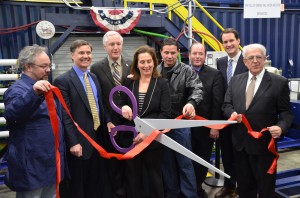
With 300 of Bridgeport”™s business leaders assembled before him, Mayor Bill Finch waggled a card at the crowd beseeching each of them to hire a young adult.
That”™s 300 jobs down, 8,000-plus to go.
As New York”™s governor proposed $1 billion in economic incentives for Buffalo ”“ a Marshall Plan of sorts for a city in desperate need of one ”“ Finch continues chipping away at Bridgeport”™s economic doldrums with no comparable commitment in the offing from Connecticut Gov. Dannel P. Malloy.
After Finch testified this month in favor of a new formula for raising bond funding, one that would rely in part on income taxes generated by Bridgeport”™s proposed Steel Point development and possibly others, Malloy”™s budget chief opposed the measure on grounds it would siphon off needed state money. Never mind the fact that there would be no economic benefit at all for Connecticut, Bridgeport or any other entity as long as the Steel Point site remains dormant. In testifying in support of the bill, Steel Point”™s developer Bridgeport Landing Development L.L.C. said the company plans to make a “strong proposal” for bond funding within the next year, while giving no indication when the long-stalled project might actually move ahead in earnest.
With $11 million in federal funding to start infrastructure work, Finch said other investors will step up and contribute to an economic revival in Bridgeport.
“I promise you this,” Finch said, “in the coming months, shovels will be in the ground and work on the peninsula will begin.”
It has been a while since Bridgeport could point to a major pipeline of projects. In 2007, on the eve of the recession, the city”™s planning and development office was considering more than 200 projects in excess of $400 million combined. In the recession year of 2009 and 2010, a slightly smaller number of projects added up to less than a tenth of that total.
Still, the city can point to isolated votes of confidence ”“ for instance, architectural design firm Fletcher Thompson”™s decision to relocate back to downtown Bridgeport where it was founded, after a sojourn in the office parks of Shelton, or the recent ribbon cutting for a new Bridgeport BioDiesel, which offers to convert used cooking oil into fuel.
U.S. Rep. Jim Himes, who attended the latter event, said no Marshall Plan is in the offing to grease the skids for Bridgeport, but said the city boasts several attributes that make it a draw for employers willing to scratch below the surface, including an outstanding transportation network, relatively cheap commercial space and a new education superintendent in Paul Vallas who brings a record of turning around city school districts in New Orleans and Chicago.
Much in the same way Malloy is staking this year on education reform, so is Finch.
On an unseasonably warm day after the mayor delivered his State of the City Address to the Bridgeport Regional Business Council, relatively few people could be spotted outside enjoying the city”™s downtown areas.
That will change, promises Rob Morris, managing partner in the Bridgeport office of Pullman & Comley ”“ and it won”™t take $1 billion in economic revitalization funding to get it done as people return to the city to live, and eventually to work as employers follow.
“It has a huge multiplier effect I think,” said Morris. “What cities need is people.”


















